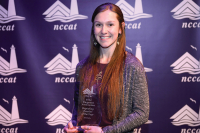Zombie lore, one bite at a time
 If you are literate and moderately aware of what passes for entertainment in film, popular novels and comics, then you are acquainted with of the strange “zombie” craze that is currently dominating much of the popular arts. In recent years, the popularity of “The Walking Dead” has grown to epic proportions.
If you are literate and moderately aware of what passes for entertainment in film, popular novels and comics, then you are acquainted with of the strange “zombie” craze that is currently dominating much of the popular arts. In recent years, the popularity of “The Walking Dead” has grown to epic proportions.
Amid the steady increase of popularity, the Atlanta-based AMC television series is currently negotiating for its fourth year and a half dozen novels (not to mention computer games and spin-offs) are attempting to use the basic “zombie invasion” plot to develop “variations on a theme.” As audience enthusiasm continues to grow, America’s critics and pop culture pundits are pondering this phenomena. Why are we preoccupied with zombies?
This brings us to the ponderous (l,086 pages) compendium which is a collection of the original comics of (issues No. 1- No. 48) The Walking Dead in a graphic novel format. According to Amazon and the The New York Times, the popularity of this collection has prompted the release of two more compendiums — both sequels to Compendium One. It is interesting to note that although much of the action and many of the characters in the popular TV series are based on Kirkman’s graphic novel version, anyone attempting to read the original stories while watching the TV epic will quickly find radical differences in both the character and action depicted.
Essentially, I found this difference refreshing. The marvelous AMC series has proved to be exceptionally imaginative. Instead of dutifully following the plot of the comic book version, AMC’s Frank Dearmont frequently creates alternative episodes and introduces characters who do not exist in Robert Kirkman’s version. Indeed, some of these original characters prove to be the most interesting. The tortured young law officer who struggles to keep his band of survivors alive is an example. In Kirkman’s version, he has a short fuse, makes tragic mistakes, but seems to be immortal, surviving repeated gunshots, brutal beatings and the loss of an arm. However, Andrew Lincoln, the actor in the AMC series, gives the character a stoic patience and a brooding melancholy that is appealing. Daryl Dixon, one of the most popular characters in the AMC series, does not exist in the Robert Kirkman version but was added to the cast on a “director’s whim.” (Daryl is the guy with the crossbow.)
The basic story evolves around a young policeman, Rick Grimes, who awakes from a coma (recovering from a gunshot wound) in a small town in Alabama, only to find that the hospital is abandoned. He ventures outside to find a nightmarish world filled with flesh-eating zombies. Returning home, he finds that his wife and son have fled to Atlanta (the government urges everyone to move to the cities for protection) and he sets out to find them. Everywhere he goes, he encounters frightened campers, and people huddled together searching for food and warmth. Fortunately, he finds his wife, Lori, and their son, Carl, who have joined a group of loosely organized people who have an old van and a few guns; however, they seem to have no survival plans or skills. Rick becomes their unofficial leader and spends the next year leading them through a daunting series of conflicts and near-disasters. Other survivors show up, but the group is slowly decimated by “the biters” (once bitten, the victim returns as one of the “walking dead”). At times, the group finds a temporary refuge (an abandoned farm, a “gated community,” a prison) and Rick comes to realize that the greatest threats are inside the group.
Related Items
Each time the group finds a refuge that provides temporary protection, there is a brief period of peace and harmony. However, conflicts invariably develop, and this band of survivors becomes a cross-section of the culture that produced them. Racism, religious intolerance, alcoholism, mental illness, suicide and domestic violence take a toll. Sexual encounters produces jealousies and conflicts. Distractions make the group less vigilant and invariably, the price is an invasion from “outside.” Suddenly, the illusion of security is shattered as the rotting dead drag more victims away.
The walking dead are always there in the background, either clinging to the protective fence/wall or staggering slowly across a field. They are like wallpaper, or a moving “momento mori” — a constant reminder of the presence of death. Thousands die, but thousands more arrive ... slack-jawed, rotting and hungry.
The problem with this graphic novel is that I kept forgetting who some of the characters are. Since there are around 70 of them, perhaps that is forgivable. I no longer recognized Rick after he shaved. The women are either blond or brunette, fat or thin, yet they all possess memorable character traits. The black and white drawings are fantastic and seem to writhe and contort like a living thing. I didn’t recognize Hershal, the deeply religious character, in the graphic novel since he resembled a half dozen other characters. However, in the film series, veteran actor Scott Wilson makes him an unforgettable character — a man tortured by the belief that the walking dead can be “redeemed” or restored (Hershal has walking dead relatives and neighbors locked in his barn awaiting resurrection.).
One of the most interesting episodes in this epic tale occurs when Rick leads his group to the ultimate refuge: an abandoned prison. When the gates are closed and Rick and his followers post sharpshooters in the prison towers, many of the survivors ponder the paradox of feeling safe and protected in ... a prison. Later, a random remark by a medical technician alarms Rick because it suggests that “we are all walking dead” since we are all infected by “mortality”.....perhaps all humanity is doomed to become “mindless cannibals.”
There is much to suggest that there is more to Robert Kirkman’s The Walking Dead: Compedium One than just another grisly tale of gore in which intestinal tracts spring out of decaying cadavers like jack-in-the-boxes. Let me quickly add that this graphic novel is filled with exploding heads, decaying flesh, grotesque tortures, detailed depictions of rape and sex, but as the judges said when they decided that Lady Chatterley’s Lover should not be banned, despite the graphic sex, the book “had redeeming social merit.” OK, I believe it is safe to conclude that there is more in The Walking Dead than sex and gore.
Back in the 50’s when we were preoccupied about bomb shelters and communists, there was a sudden craze for movies about UFOs and sinister aliens. Movies that featured “pod people” and Roswell aliens (that possessed you when you slept) were popular. Recently, Oliver Stone suggested that the extraterrestrial threats in “War of the Worlds” and “Godzilla” were merely substitutes for other threats (communism?), then what are the “walking dead?” Are there “mindless, brain-dead beings among us who are filled with an uncontrollable compulsion to consume?” When they are sated, do they sit quietly, perhaps humming a little, doing nothing until they are hungry again? Are they lurking out there now? Did I just see a few on CNN’s “Entertainment Tonight” The one that features Paris Hilton?
I have failed to discuss a major character called “The Governor.” That is probably a good thing. Let me say that he may well be the most terrifying character ever created in a graphic novel. I am eager to see how he is depicted on the AMC version.









